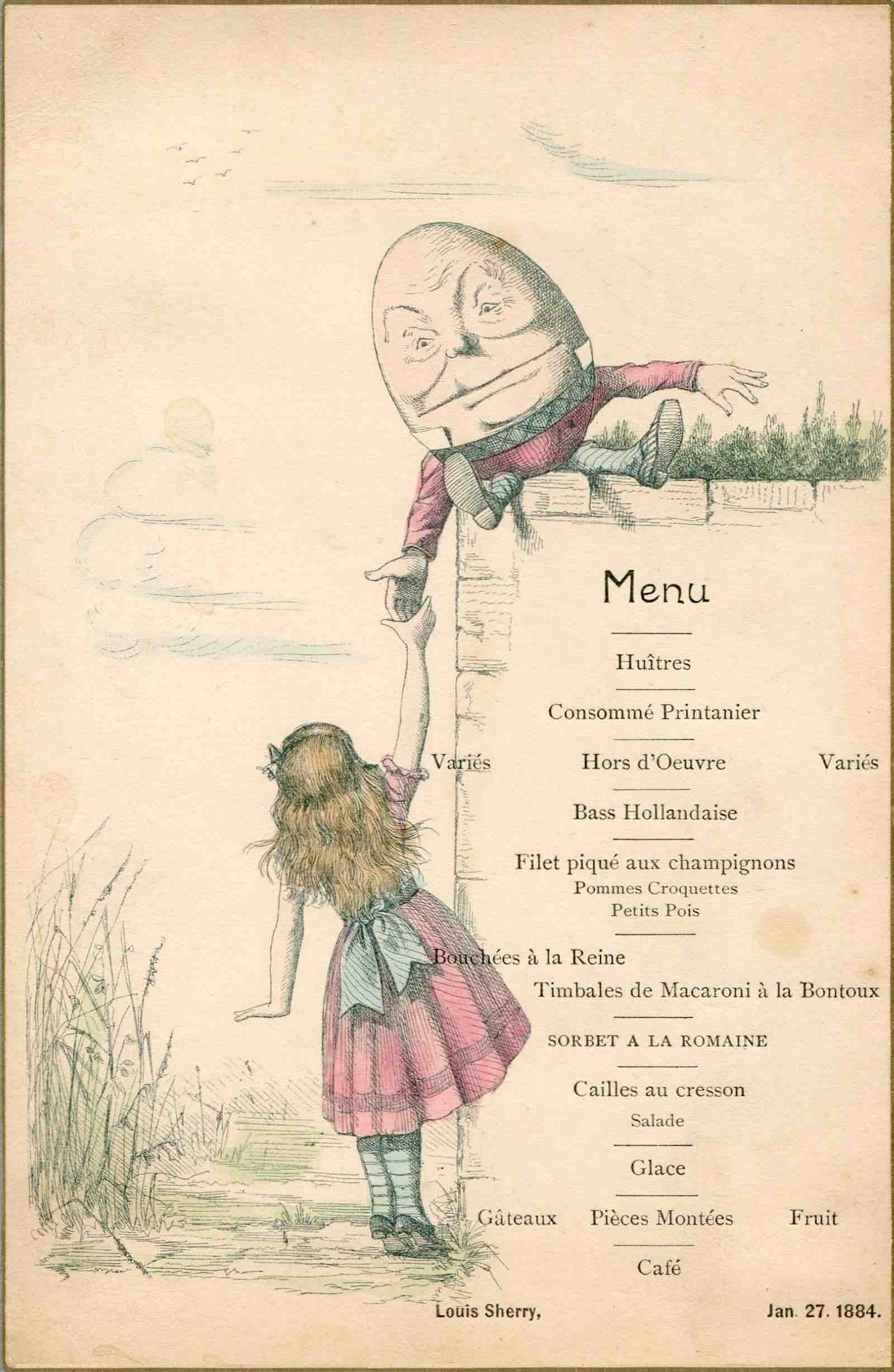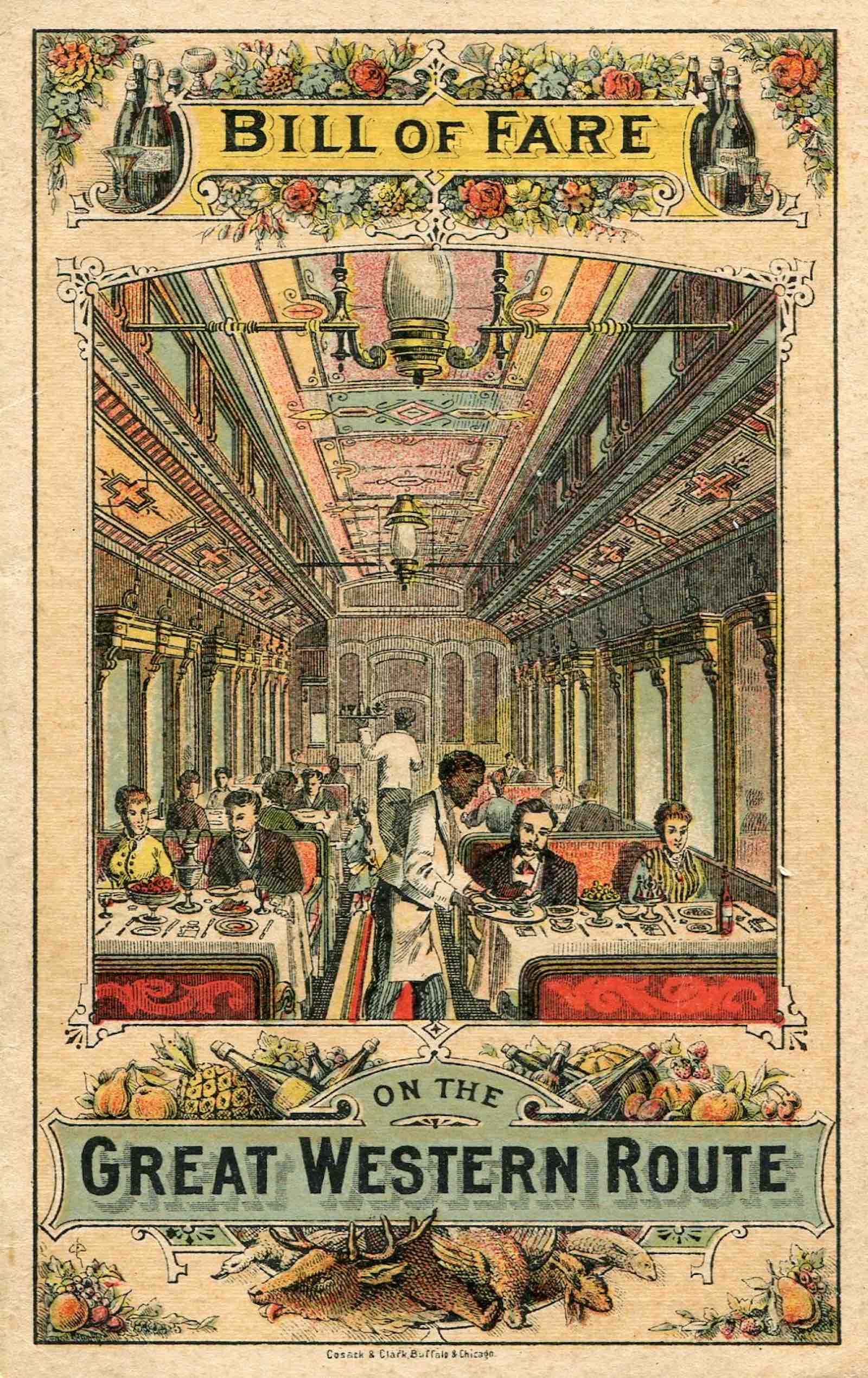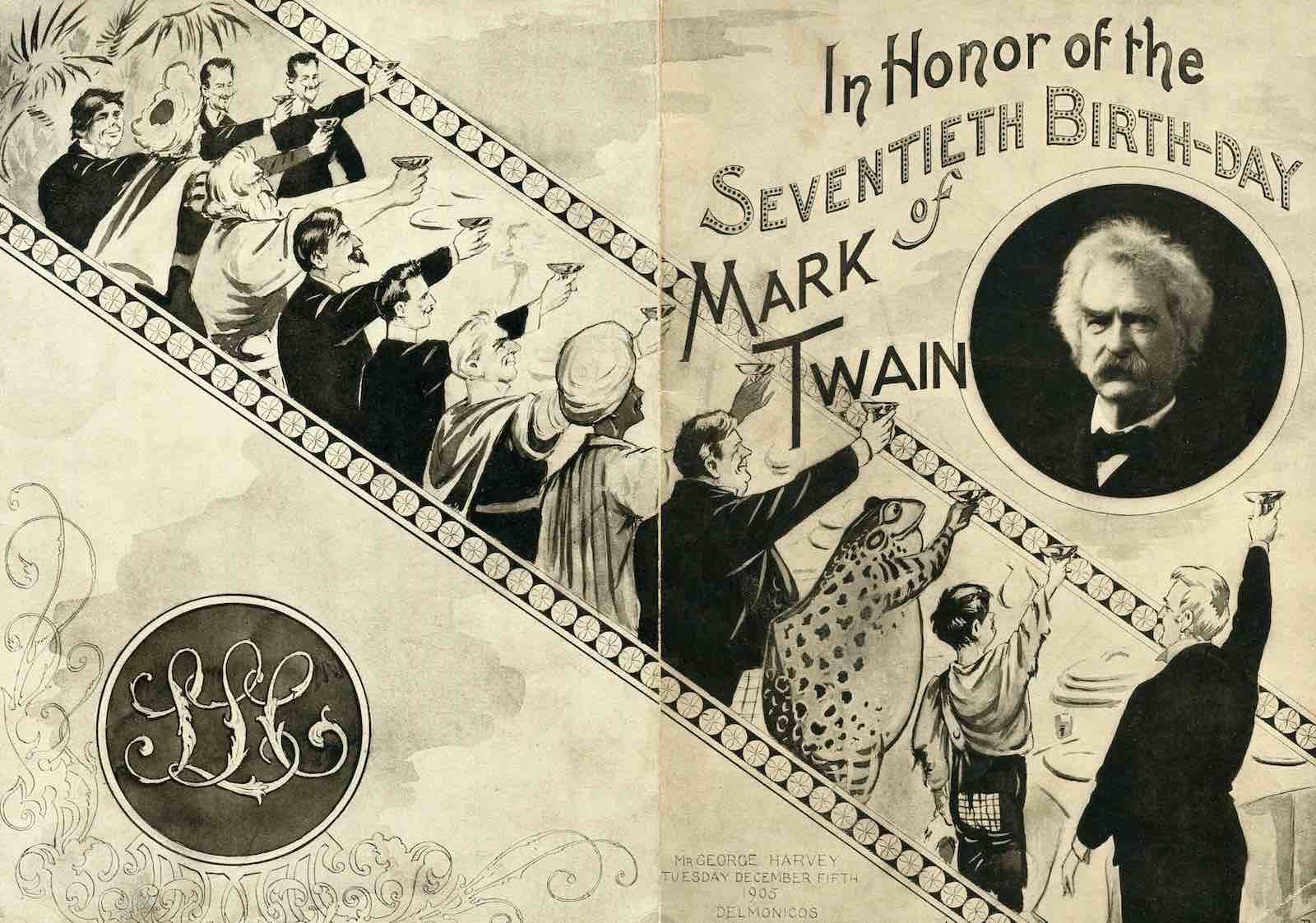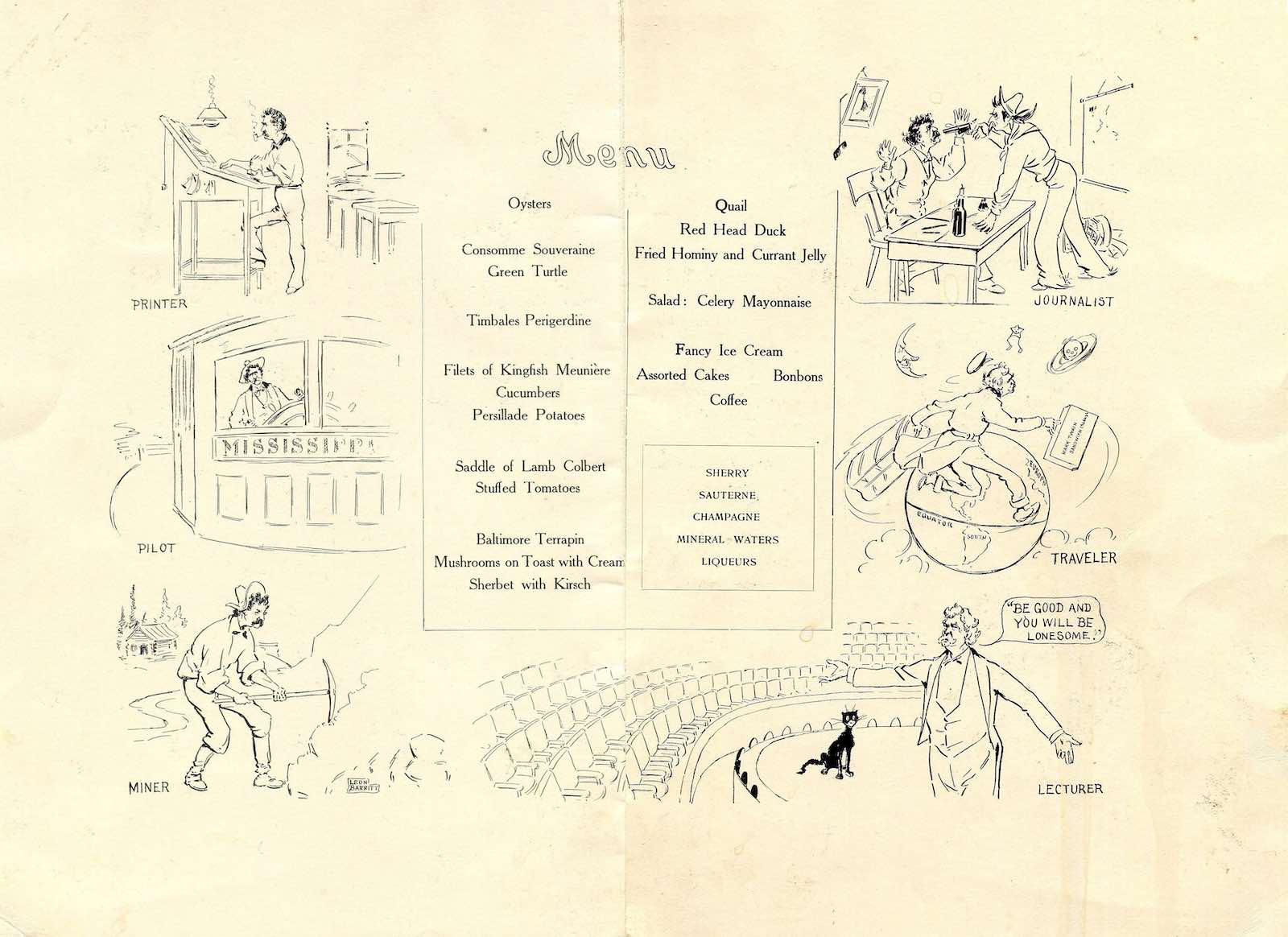Exhibition Highlights
Among the highlights of Dining Out are the only known copies of two menus from Taylor’s Saloon (ca. 1861-1862), which are on public display for the first time. The foremost women’s restaurant in antebellum New York, Taylor’s was among the first public places where women could dine without a male escort. Showcased in dark, lavish menus with inlaid mother of pearl, Taylor’s elaborate 28-page bill of fare had 19 sections—including cold meats and relishes, oysters, eggs and omelettes, ice cream, wine, and ale–as well as advertisements for Tiffany’s and Barnum’s Museum.
Some restaurants played a key role in literary history but have become a footnote. Edgar Allan Poe frequented Welsh’s Eating House when he wrote The Raven, workshopping the poem with his fellow diners. The restaurant’s daily menu was printed as a newspaper in a bombastic and humorous style. Walt Whitman went to Charles Pfaff’s almost every night between 1858 and 1862, while he was working on the early editions of Leaves of Grass. The entrance to Pfaff’s was a hatchway in the sidewalk where patrons walked down a steep metal stairway, as if entering a root cellar.
Also on view is a rare surviving menu from President Abraham Lincoln’s second inaugural ball (March 6, 1865), which featured a 250-foot-long buffet table of delicacies, including a huge cake in the shape of the Capitol Building with its new dome. When the doors to the room opened, pandemonium erupted as 4,000 hungry revelers rushed the buffet table. “In less than an hour the table was a wreck… positively frightful to behold,” reported the New York Times. Another special event was Mark Twain’s 70th birthday party at Delmonico’s, which was national news in 1905. The menu is illustrated with a circle of pen-and-ink sketches depicting the guest of honor at the successive stages of his varied career.
A bill of fare from the transatlantic steamship Baltic reveals what was served at sea on Thanksgiving in 1852: three wild hare dishes. Shelves suspended from the ceiling above each table securely held the glassware and decanters that jiggled when a large wave passed through. The service proceeded much as it would at a fine hotel, except everything was in constant motion due to rough seas.
Historic Menus on Display at The Grolier Club
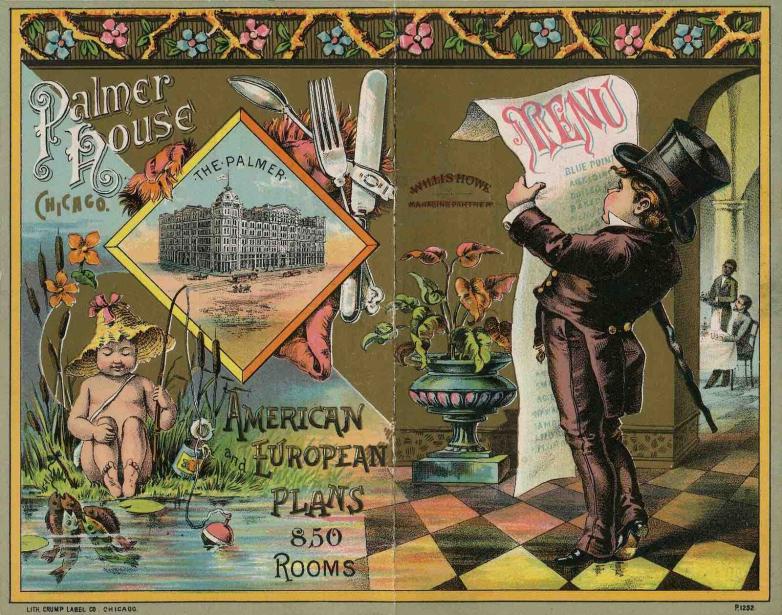
Palmer House, Chicago, 1886. The Palmer House opened on September 26, 1871, only thirteen days before it burned to the ground in the Great Fire. The second Palmer House advertises itself as “thoroughly fire proof” on this table d’hôte menu for the evening meal. The Palmer House hosted such famous guests as actress Sarah Bernhardt; writers Mark Twain and Oscar Wilde; and Presidents James Garfield, Ulysses S. Grant, and Grover Cleveland.
This spring, the Grolier Club in New York City presents a special exhibition exploring the history and culture of dining out through a vast collection of vintage menus. On view from April 26 through July 29, 2023 in the Grolier Club’s ground floor gallery, A Century of Dining Out: The American Story in Menus, 1841-1941 features menus that document the first 100 years of dining out in the United States. The exhibition is curated by Grolier Club member Henry Voigt from his renowned collection of historic menus and features an accompanying publication.
“Menus tell us how people have dined outside the home over time. They aid our cultural memory by providing historical evidence, not only of what people were eating, but what else they were doing and with whom they were doing it; and what they valued,” said curator Henry Voigt. “Examine one and be transported back to the everyday life of the past—whether to a lavish banquet in the Gilded Age or a food-relief eatery during the Great Depression.”
Dining Out features 227 menus and related ephemera ranging from hotels and restaurants, to specialized venues such as a Mississippi riverboat, a utopian community, and a military encampment, among others. The decade-by-decade chronology reflects distinctive aspects of American history and culture, such as celebrations of progress and the rise of the middle class.
Menus came into general use in the United States in the 1840s when hotels and restaurants were replacing the old inns and taverns that served a limited choice of domestic-style meals. Dining among strangers in quasi-public spaces was a new and novel kind of entertainment in which the menu played a central role. While most menus were intended for short-term use and never meant to be saved, some were crafted by leading stationers like Tiffany’s, decorated with silk ribbons and finely rendered watercolor scenes.




